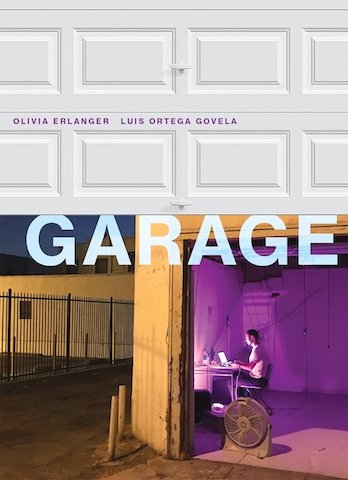This cultural history of the garage, the space next to ‘your home’ where you ‘keep your car’ so that you can ‘drive’ to ‘work’ (seemingly fixed terms become mutable as Olivia Erlanger and Luis Ortega Govela develop their thesis that this humble structure is the most important architectural form of the last century) – draws a line from Jesus Christ to Frank Lloyd Wright to Steve Jobs to, implicitly, the current US president, who, though unmentioned, must be casting some of the shadow in the authors’ downbeat assessment of our contemporary condition: minds suburbanised, lives garage-ified and the dominant power structure defending its privileges as fiercely and effectively as ever.
The writers approach this tale from the directions of art (Erlanger) and architecture (Ortega Govela) in a sometimes awkward, high-energy blending of feminist and queer-Marxist readings; both also contribute artworks, photocollages, renderings, film stills and other illustrations. It goes like this: the manger-stable was brought into the home at about the time the Ford Model T entered production, when Wright’s radical and determinedly patriarchal design for the Robie House (1908–10), informed by his experience of growing up fatherless, had the knock-on effect of producing an attached garage (and subsequently Mrs Robie’s departure). This was not a masculine space per se but one that, because it lay empty much of each day, was ripe for reprogramming by those wishing to escape from family and neighbours – for weightlifting, home-brewing, drumming, etc – or, more consequentially, from the past, the status quo and other strictures. It’s this second path that fires up Erlanger and Ortega Govela. While elaborating, almost in the background, connections between the automobile, suburbia, white flight, the financialisation of the American home, the iPhone and the collapse of divisions between (as well as definitions of) labour and leisure, the authors build towards a hectic crescendo in which the garage, incubator of myths surrounding the solitary radical (usually male, from Wright himself to the pioneers of Silicon Valley, though Gwen Stefani also gets a mention) whose creations are appropriated by the very systems they sought to disrupt, remains, as ‘a space of fluid otherness’, the best paradigm for hacking the ‘smooth bubbles’ and algorithmically fed-back loops of our corrosively suburban online existences. Only this time around, they write, we must seek to nurture the collective over the individual (more multistorey car park than garage, then). It’s an abrupt and weak ending to a provocative and exuberantly presented thesis.
From the January & February 2019 issue of ArtReview
